
Thieme Chemistry
Keep Track of the Latest Content
暮春醉五月:春风、细雨、青草、蓝天、白云... 当然也少不了Thieme化学的精彩内容。欢迎阅读本月精选:
在彼得·鲍尔(Peter Bäuerle)教授65岁生日之际,ORGANIC MATERIALS出版virtual focus issue,以表彰他在有机材料领域的杰出贡献。
SYNTHESIS欢迎新编辑:来自美国密歇根大学的Corinna Schindler教授已加入本刊编辑委员会,负责专题和专刊的出版。
欢迎您阅读SYNTHESIS、SYNLETT、SynOpen和Organic Materials的精选论文,并通过SYNFORM深入了解化学界最新动态。
祝您尽享春日与化学之美!
Our Highlighted Articles and Specials
Organic Materials
Boosting the Stability of Boron Peroxides through Subphthalocyanine Coordination
J. Labella et al.
The great potential of subphthalocyanines (SubPcs) to stabilize boron peroxides has been demonstrated. In particular, a subphthalocyanato boron (III) peroxide has been prepared in good yield via boron triflate. This derivative is remarkably stable under ambient conditions and can be fully characterized. The impact of the peroxide group on the structural and optoelectronic properties of SubPc was examined by NMR and UV/Vis spectroscopies, as well as single-crystal X-ray diffraction analysis. Moreover, density functional theory calculations were performed to explain the experimental results. The reactivity of this peculiar boron peroxide as an oxidant and a Lewis base was also studied.
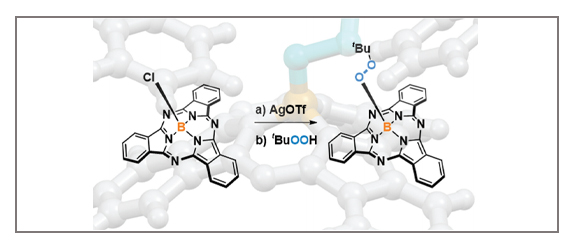
Organic Materials
Chain-End Effect for Intermediate Water Formation of Poly(2-Methoxyethyl Acrylate)
S. Nishimura et al.
Intermediate water (IW), which is formed not only by biocompatible polymers such as poly(2-methoxyethyl acrylate) (PMEA), but also by biomacromolecules, plays a key role in determining the biocompatibility of synthetic polymers. In this study, we compare the well-defined linear and cyclic PMEA using differential scanning calorimetry and atomic force microscopy. This study aims to clarify the role of the chain-end effect in IW formation to establish design guidelines for biomaterials.
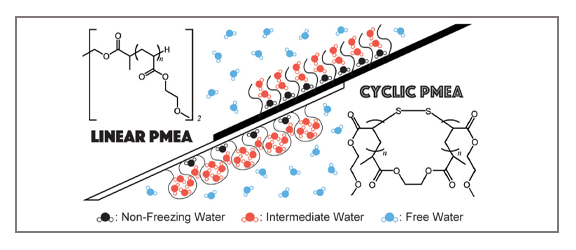
▼
Synlett
C–O Bond Activation as a Strategy in Palladium-Catalyzed Cross-Coupling
J. Becica, D. C. Leitch
The activation of strong C–O bonds in cross-coupling catalysis can open up new oxygenate-based feedstocks and building blocks for complex-molecule synthesis. Although Ni catalysis has been the major focus for cross-coupling of carboxylate-based electrophiles, we recently demonstrated that palladium catalyzes not only difficult C–O oxidative additions but also Suzuki-type cross-couplings of alkenyl carboxylates under mild conditions. We propose that, depending on the reaction conditions, either a typical Pd(0)/(II) mechanism or a redox-neutral Pd(II)-only mechanism can operate. In the latter pathway, C–C bond formation occurs through carbopalladation of the alkene, and C–O cleavage by β-carboxyl elimination.
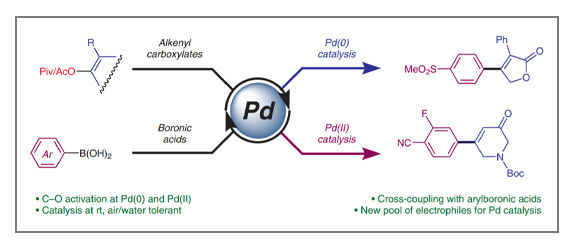
Synlett
Q. Li, I. B. Seiple
Streptogramins are antibiotics produced by several species of Streptomyces bacteria that are used in both human and veterinary medicine. Group A streptogramins comprise 23-membered macrocyclic polyketide/nonribosomal peptide hybrids for which several innovative fully synthetic routes have been developed. Herein we describe in detail our scalable routes to natural Group A streptogramins and we compare these routes to other reported syntheses.
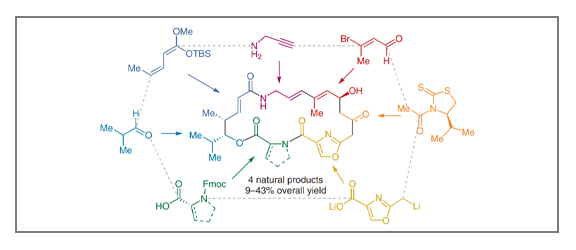
▼
Synthesis
欢迎新编辑加入!

自2021年5月1日起,来自美国密歇根大学的Corinna Schindler教授加入SYNTHESIS编辑委员会,担任专题和专刊的责任编辑。
Corinna Schindler教授的研究实验室专注于开发新的合成转化和生物活性复杂分子的合成。
Synthesis
A. Jeminejs et al.
Nucleophilic aromatic substitution reaction between 4-arylthio-2-chloroquinazolines and NaN3 takes place with an unusual sulfanyl group dance and leads to the formation of 5-(arylthio)tetrazolo[1,5-c]-quinazolines, which do not form the azide tautomer and do not undergo CuAAC reactions with alkynes. On the other hand, 5-azidotetrazolo[1,5-a]quinazoline (formally described as 2,4-diazidoquinazoline) undergoes regioselective nucleophilic aromatic substitution with thiols at C5 and forms 5-(alkyl/arylthio)tetrazolo[1,5-a]quinazolines, the structure of which has been proved by X-ray crystallography. The latter exist in tautomeric equilibrium with their 2-azidoquinazoline form, which provides possibility for copper-catalyzed azide–alkyne 1,3-dipolar cycloaddition reaction, leading to the 4-alkyl/arylthio-2-(1H-1,2,3-triazol-1-yl)quinazolines.
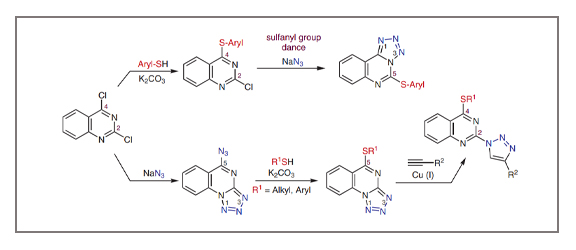
▼
SynOpen
Atropisomerism in Styrene: Synthesis, Stability, and Applications
Jia Feng,Zhenhua Gu
中国科学技术大学,闽江学院
Atropisomeric styrenes are a class of optically active compounds, the chirality of which results from restricted rotation of the C(vinyl)–C(aryl) single bond. In comparison with biaryl atropisomers, the less rigid skeleton of styrenes usually leads them to have lower rotational barriers. Although it has been overlooked for a long time, scientists have paid attention to this class of unique molecules in recent years and have developed many methods for the preparation of optically active atropisomeric styrenes. In this article, we review the development of the concept of atropisomeric styrenes, along with their isolation, asymmetric synthesis, and synthetic applications.

▼
Synform
People, Trends and Views in Chemical Synthesis
